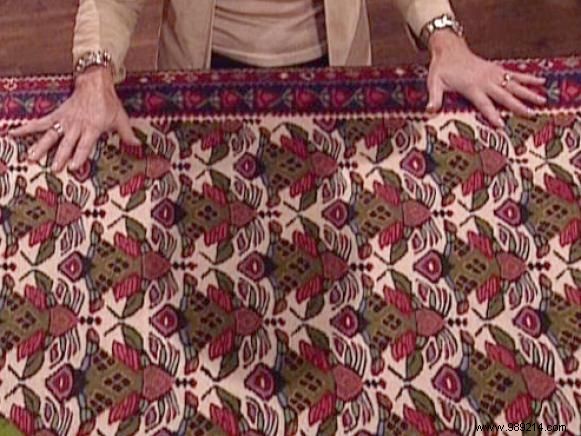Determine the type and amount of use that will occur in the area where the new carpet will go. If it's a high-traffic area, spend a little more on a higher-quality rug that will last longer. If it's a lower traffic area, go with taste rather than quality.

Lucie rowe
If the rug will be the visual focal point of the room, select one with an ornate pattern or print. Otherwise, go for a simpler design.
The choice of rug can also take into account pets and children, and whether the rug will be used in a room with a higher chance of spills and stains.
Finally, consider your budget before you buy. Rugs can range in price from a few dollars to a few thousand dollars, depending on various factors.
A woven kalim is a visually striking rug often displaying an ornate pattern. Such a rug becomes a visual focal point in a room and adds a lot of color and texture to the setting where it is used. Kalim rugs are strong but very thin. They are relatively inexpensive and hold up well because they are made of wool. They are a good option in a well traveled area..
A Persian knotted wool is a very fine rug; This type is generally quite expensive. The cost is derived from the way these mats are constructed. They are made by hand from finely knotted fibers. The rug shown in our demo has 350 knots per square inch. The fine craftsmanship of these exquisite rugs is evident upon close examination. One of these handmade rugs can represent a year or more of work done by a family in the country in which they are made by hand. An indicator of authenticity and quality is the fringe on the edge of the rug. In a genuine knotted wool rug, the fringe is actually woven into the fibers of the rug, not simply sewn. Persian wool rugs are dense, thick and durable. They make a stunning addition to a room, and are especially well-suited for formal settings.
Synthetic rugs strive to emulate the look of authentic Persian rugs, but they are machine made and much cheaper to purchase. However, these cheaper versions may be suitable if you are on a budget. An easy way to identify a synthetic rug is to examine the back. The fibers are not hand knotted, but rather are punched through the backing as with rugs. The fringe is simply sewn on after the rug is made. Synthetic rugs are suitable for many applications, but will not last as long as true wool rugs, which can last for generations.
For an even less expensive option, consider a chenille rug. These are available in a variety of patterns and styles. They are not as durable as finer mats, but may be suitable for less demanding applications.
Determining the size of a rug will depend on the type of setting in which it will be used. For a fairly simple large room, opt for a larger rug, and try to find a size that allows you to have even edges between the rug and the walls. For a dining room, determine the size by adding at least 4' to the length and width of your dining table. This will ensure that the table and all chairs sit flat on the rug.
Consider using multiple rugs to delimit areas in a single room, if there is enough space to do so. Mix and match, but avoid mixing rugs that are drastically different in style and appearance.
Use rug pads to help prevent slipping and to extend the life of rugs. There are a number of varieties of rug pads available. Ask a carpet dealer which type is best suited for the type of carpet selected.